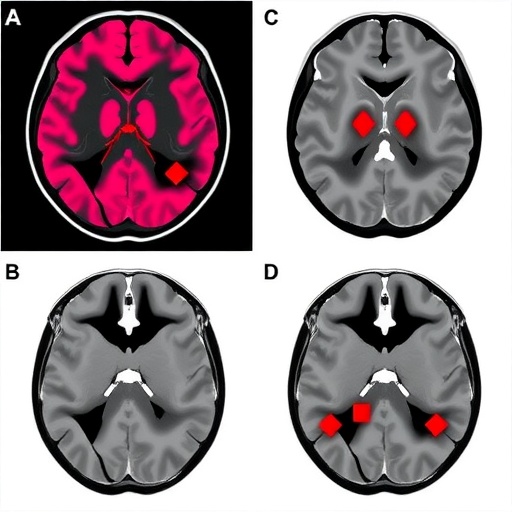In a groundbreaking study poised to reshape our understanding of metabolic health in the elderly, researchers have uncovered a complex, U-shaped relationship between body mass index (BMI) and liver stiffness—a crucial marker of liver health. Published in the International Journal of Obesity, this innovative cohort study sheds light on the nuanced ways BMI influences liver pathology in older populations, challenging the conventional wisdom that either higher or lower BMI levels alone uniformly dictate liver disease risk.
Liver stiffness, commonly measured through elastography techniques, serves as a non-invasive biomarker for fibrosis and liver disease progression. Its elevation signals compromised liver architecture, which can precede conditions such as cirrhosis and hepatocellular carcinoma. Traditionally, obesity has been linked with increased liver stiffness due to fatty infiltration and ensuing inflammation, but this new research disentangles the simplistic association by revealing that both very low and very high BMI values correlate with heightened liver stiffness among older adults. This discovery invites a reevaluation of the role weight plays in hepatic integrity during aging.
The study employed a robust retrospective cohort design spanning five years, including a significant sample of older adults tracked longitudinally. By harnessing detailed clinical data on BMI and liver stiffness measurements, the investigators constructed sophisticated statistical models that unveiled a non-linear, U-shaped curve when plotting BMI against liver stiffness risk. This curve suggests that maintaining a moderate BMI may offer protective benefits for liver health, whereas deviations toward underweight or obesity can be detrimental.
These findings are pivotal as the global population ages and the prevalence of liver-related diseases escalates. Despite ample research on liver health in the context of obesity, studies focusing specifically on the elderly population remain sparse. Age-related physiological changes, altered fat distribution, and metabolic shifts complicate the liver’s response to body weight fluctuations, underscoring the importance of this targeted analysis. The nuanced conclusions drawn in this research provide a much-needed lens through which clinicians can better interpret BMI’s implications in older patients.
Importantly, the U-shaped relationship indicates that being underweight may be as significant a risk factor as obesity for elevated liver stiffness in the elderly. This insight disrupts the common assumption that only excessive adiposity harms liver function. Malnutrition, sarcopenia, and frailty often observed in underweight older adults can exacerbate hepatic vulnerability, leading to fibrosis and impaired regeneration. By capturing this dual risk, the study advocates for more balanced nutritional strategies to preserve liver health.
From a technical standpoint, liver stiffness assessments involved transient elastography, a cutting-edge ultrasound-based tool that quantifies tissue elasticity. This modality is favored for its accuracy and non-invasiveness, especially in populations where liver biopsy poses augmented risk. The cohort’s longitudinal nature allowed the researchers to track changes over time, providing dynamic insights rather than static snapshots—a methodological strength that enhances the study’s clinical relevance.
Additionally, the researchers controlled for confounding variables such as alcohol consumption, diabetes, and viral hepatitis status, which independently affect liver stiffness. This rigorous approach isolates BMI as a key variable influencing hepatic outcomes. The demographic focus on older adults, aged 65 and above, adds specificity to the findings, emphasizing how the interplay between aging and body weight distinctly shapes liver pathology beyond younger cohorts.
Implications of this study ripple through clinical guidelines and public health policies. Traditionally, BMI thresholds have been standardized with general population metrics in mind, often neglecting the elderly’s unique physiological landscape. This evidence suggests the need for age-adjusted BMI targets in screening and intervention strategies to optimize liver-related outcomes. Healthcare providers might now consider intermediate BMI values as a therapeutic goal rather than solely emphasizing lower BMI for disease prevention.
Moreover, the study raises questions about the mechanisms underlying the heightened liver stiffness observed at low BMI levels. Potential factors include protein-energy malnutrition, chronic inflammation, and mitochondrial dysfunction, all of which can accelerate fibrosis. Conversely, high BMI often corresponds with non-alcoholic fatty liver disease (NAFLD), insulin resistance, and systemic inflammation. Investigating these divergent pathways in elderly patients could reveal novel therapeutic targets aimed at mitigating liver damage.
This new understanding resonates deeply with the broader movement toward precision medicine, emphasizing tailored approaches based on individual risk profiles. For older adults, this could translate into personalized nutrition plans, pharmacological interventions, and lifestyle modifications designed to maintain BMI within a specific window that supports hepatic wellness. It also highlights the intricate balance required in clinical decision-making where weight loss may not always be the most beneficial approach.
The findings have sparked renewed interest in integrating elastography assessments into routine geriatric care to monitor liver health proactively. Early identification of elevated liver stiffness could prompt timely interventions, potentially halting the progression to advanced fibrosis or cirrhosis. In addition, these insights may influence the development of new screening protocols that incorporate BMI and elastography results to stratify liver disease risk more accurately.
Challenges remain in translating these findings into practice, particularly given the heterogeneity within elderly populations. Variations in comorbidities, medication use, and functional status must be accounted for when applying BMI-based liver risk assessments. Future research will need to explore these contextual factors and aim to replicate the study’s findings across diverse populations and healthcare settings.
Notably, the study prompts consideration of how sarcopenic obesity—a condition marked by increased fat mass and decreased muscle mass—fits within this U-shaped framework. Sarcopenic obesity, highly prevalent among the elderly, could represent a confounding phenotype that influences liver stiffness independent of BMI alone. Delving deeper into body composition metrics alongside BMI may yield even richer insights into liver health risks.
Overall, this research challenges monolithic perceptions of body weight and liver disease in aging populations. By illuminating a U-shaped association, it compels clinicians and researchers to think beyond linear models and simplistic categorizations. The emerging paradigm underscores a delicate balance where both ends of the BMI spectrum pose risks, advocating for nuanced, individualized care approaches.
As the burden of liver disease continues to grow amidst demographic shifts and lifestyle changes, studies like this provide a vital compass pointing toward optimized preventive and therapeutic strategies. By capturing the complexity inherent in the relationship between BMI and liver stiffness in older adults, this study propels the field forward, promising improved outcomes through informed, evidence-based interventions tailored to this vulnerable group.
In summary, the identification of a U-shaped relationship between BMI and liver stiffness in the elderly represents a major advance in hepatology and geriatric medicine. It reframes the way we understand risk factors for liver tissue damage and offers new avenues for research and clinical practice aimed at preserving liver function during aging. Given the growing elderly population worldwide, such insights are both timely and essential for fostering healthier aging trajectories.
Subject of Research: The association between body mass index (BMI) and the risk of elevated liver stiffness in older adults.
Article Title: A U-shaped relationship between body mass index and the risk of elevated liver stiffness in older people: evidence from the 5-year retrospective cohort study.
Article References:
Lv, L., Long, L., Zheng, Y. et al. A U-shaped relationship between body mass index and the risk of elevated liver stiffness in older people: evidence from the 5‐year retrospective cohort study. Int J Obes (2025). https://doi.org/10.1038/s41366-025-01849-8
Image Credits: AI Generated
DOI: https://doi.org/10.1038/s41366-025-01849-8
Tags: BMI and liver pathologyelastography in liver assessmenthepatic integrity during agingInternational Journal of Obesity research findingsliver disease progression markersliver stiffness risk in elderlylow BMI and liver healthmetabolic health in older adultsnon-invasive liver disease biomarkersobesity and liver stiffnessretrospective cohort study on BMIU-shaped BMI relationship





